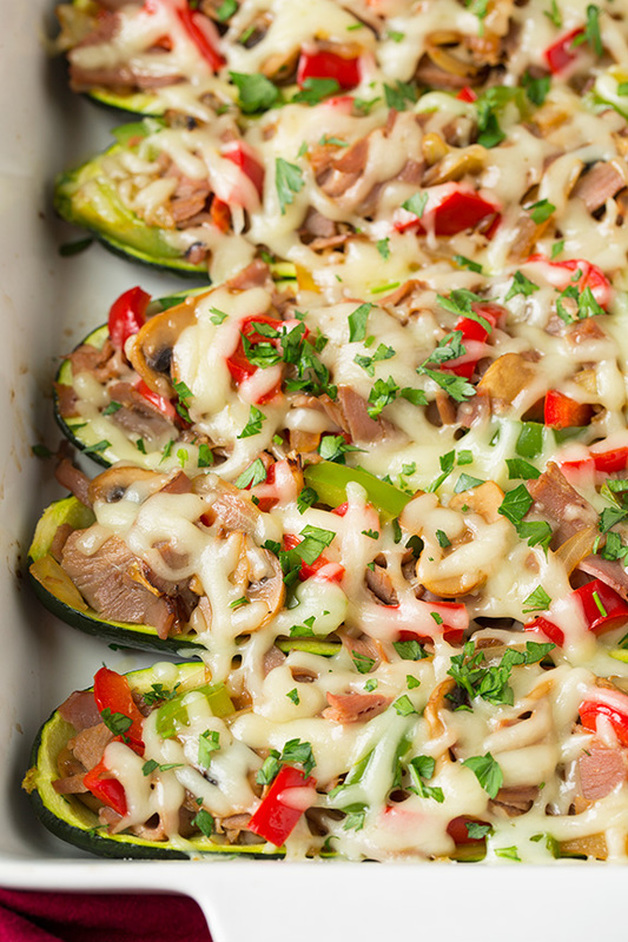|
Deciding to eat whole and healthy food can seem daunting-especially if you're not really used to it. But I gotta say, there are so many good-for-you recipes out there (on the internet, in magazines, in cookbooks) not to mention there just being so, so, so many strait-up tasty good for you foods right outta the earth, that if you find yourself thinking "I can't so this! I can't eat healthy!", then take a deep breath, Google "whole foods recipes", or go to your library and look up some healthy cooking recipe books, or just go to your grocery store and walk around the produce department and see all the amazing things that are there! What I want to share today are some of my favourite healthy recipes & foods! A favourite snack of mine is fermented or pickled vegetables! It may seem gross, but I love having a snack that is A: a vegetable, and B: extra good for me by being pickled or fermented! There is a difference between something being pickled or fermented, but I feel like I can just save that conversation for another time. For now, let's just lump them together, knowing they are the same and different! I realize if you need to watch your sodium intake this option may not seem so great, but as an occasional snack, it can be very beneficial. You can read this article from Wellness Mama about the benefits of eating fermented food. Not only do I love pickled and fermented foods, I often drink the "juice" that the food is in as a relief for heartburn. Wait-what? Drinking acidic "juice" to help with heartburn?!? Oh yes. To be honest, there isn't a whole lot of research out there as to the "why" this works, but I'm telling you, it does. If I feel heartburn coming on (often at bedtime), I'll take a tablespoon or so of pickle juice, and my heart burn instantly (no, seriously, instantly!) goes away! Anywhooo, recipes for homemade pickled and fermented foods can be found all over, but I wanted to share with you a simple pickled carrot recipe (a favourite in this house--though I add a lot more garlic because we love it) from It's A Love/Love Thing. Other pickled or fermented foods include pickles (obviously!), some yogurts (look for labels with "Live & Active Cultures" on it)-and try to make sure you buy a kind without any, or too much, added sugar, sauerkraut, and kefir which is a fermented milk product (cow, goat or sheep milk) that tastes like a drinkable yogurt. Another favourite snack of mine is having a big, beautiful bowl of fruit! The photo above is an actual bowl of fruit I sat down to as a snack! Yum, right? So, salads seem like a pretty expected fall back meal when thinking about healthy eating, and can admittedly get boring! But salads can be super-crazy delicious, you can make them in so many ways, and with so many flavours! Above is an awesome (I'm joking, I clearly know it's ridiculous!) selfie of me with my Taco Salad (...sans taco). I love this salad because it's everything I love about tacos, except with waaaaaay more veggies! Some more favs: Comfort food is something people seem to miss when they're eating healthier, but they don't need to! Look at some of these delicious examples....... From Julia's Album comes this amaaaaaa-zing Chicken with Bacon Mustard Sauce....mmmmmmmmmmm..... Cooking classy created these Philly Cheesesteak Zucchini Boats that are so good! Not into zucchini? Feel free to try my Philly Cheese Steak Peppers! As for sweets that are healthy, well, the opinions are so varied I don't even want to go there! I will give my 2 cents though.....when in doubt about a sweet treat, start with a favourite fruit. You may find that you can knock your sweet craving with a naturally sweet treat. I find mangos really hit the sweet spot for me, but find something that feels treat-ish to you! Think fruit as a sweet treat is dumb (haha, I know some of you are thinking that!!!)-then try some dark chocolate. Look for 60% or higher dark chocolate with little added sugar or any other funky ingredients. To get the health boosting antioxidants from the cocoa, you do need to choose a dark chocolate, as milk (in milk chocolate) binds to the antioxidants and makes it unavailable to the body. I honestly love eating a handful of my Pascha 100% cocoa chips (link below) and it always hits the spot. I think that's all I'll share with you for today! A few snacks, a few salads, some comfort foods, and my 2 cents about sweets should help you change your mind at least a little about healthy food being boring! Get creative about your food, try new things, and see how much fun good for you food can be! Alrighty, I'm signing off!
3 Comments
I read an article recently that I found very interesting, and so I wanted to share it! It's from popsugar.com. Binge Eating DisorderAlthough binge eating disorder affects more people than anorexia and bulimia combined, it was only recently recognized by health experts. Our friends at Self are here to explain the facts behind binge eating disorder. If you think that you or someone you know may be suffering from an eating disorder, refer to the support links to at the end of this article and take NEDA's Online Eating Disorder Screen. Hearing the words eating disorder, most people automatically think of anorexia and bulimia. But actually neither of these is the most common eating disorder people struggle with. For years, there were essentially three buckets into which eating disorders were grouped: the two we've all heard of, and, well, everything else. If you were dealing with something that was neither anorexia nor bulimia, it was usually referred to as either "eating disorder not otherwise specified" or "other specified feeding or eating disorder." But these catch-all designations are falling out of favor with experts who know that within them, there are more accurate diagnoses that could actually describe what people are experiencing — we just don't know what to call them yet. About three years ago, one particular diagnosis was plucked out of the muddle of EDNOS and OSFED, and today it is considered the most common eating disorder in the U.S. (At least, the most common one that actually has a name.) Known as binge eating disorder, the condition affects 3 to 5 percent of women, which is about 5 million sufferers nationwide. In comparison, up to 1 percent of women have anorexia, and 1 to 2 percent are afflicted with bulimia, according to the National Eating Disorders Foundation. And it's estimated that 57 percent of people with binge eating disorder never receive treatment. Here are nine important facts you need to know about binge eating disorder, including how to recognize signs of it in yourself and loved ones, and what to do if you think there's a problem. 1. Binge eating disorder is more than just eating too much food Insatiable cravings that lead to eating large amounts of food, often quickly and to the point of physical pain, and followed by intense shame and self-loathing, characterize binge eating disorder, says Kathleen Murphy, licensed professional counselor and clinical director atBreathe Life Healing Centers, where the Breakfree at Breathe program specializes in treating binge eating disorder. Unlike bulimics, who also binge, those with binge eating disorder don't purge afterward. Since most sufferers feel so ashamed, they often eat alone or in secret. The ensuing emotional distress affects work, school and personal relationships. 2. Unlike other eating disorders, nearly as many men get it as women While binge eating disorder does affect more women, who make up 60 percent of patients, men account for a significant 40 percent of cases. "We often see that binge eating disorder in women is more likely to occur in early adulthood, while it frequently occurs mid-life for men," says Murphy. Caucasian, Hispanic and African American populations are equally impacted, causing many experts to call it an "equal opportunity" disorder. Up to 1.6 percent of adolescents of both genders suffer from binge eating disorder, though individuals who seek treatment for binge eating disorder are often older than those who suffer from bulimia and anorexia, says Murphy. 3. Binge eating disorder was only recently recognized as a disorder In 2013, binge eating disorder was finally categorized as a recognizable and treatable diagnosis in the Diagnostic and Statistical Manual of Mental Disorders (DSM-5) produced by the American Psychiatric Association. This was incredibly important to the treatment of the disease, since a diagnosis that can be documented leads to greater access to care for sufferers. For example, most health insurance companies won't provide coverage for mental illness treatments that don't have an officially recognized DSM-5 diagnosis. Since it's now listed as a disorder, many insurance plans cover treatment. 4. Binge eating disorder is a habitual eating pattern, not something you do once or twice a year Who hasn't overeaten and felt guilty after an indulgent holiday like Thanksgiving or an all-you-can-eat Sunday brunch? Binge eating disorder is not occasional overeating, however. "Episodes must take place at least once a week over a period of at least three months," explains Murphy. Additionally, binge eating disorder is marked by a considerable amount of distress and a deep feeling of shame over the eating behavior. The overeating-guilt pattern is a vicious cycle that makes people feel completely out of control. 5. Emotion — not hunger — is what appears to be the driving force behind binge eating disorder The disorder is still newly classified, so research is underway and all of the causes of binge eating disorder aren't known just yet. However, there are correlations between binge eating disorder and different manifestations of sadness and emotional stress. "The most common trigger for an episode is feeling badly or depressed," says Murphy. This could be due to relationship and work problems, stress from battling weight fluctuations and body image issues, feelings of loneliness, and even boredom. 6. Certain personality types are more prone to the disorder High risk factors for having an eating disorder, including binge eating disorder, have been identified by scientists. Personalities that are inclined toward perfectionism, difficulties regulating emotion, having a rigid thinking style (like there is only one way to do things), and stress eating, are all more likely to fall victim. Those who suffer from anxiety or low self-esteem, or harbour obsessive-compulsive tendencies, are all more likely to have binge eating disorder too, says Murphy. 7. There's a genetic predisposition to binge eating disorder A close family history of depression or addiction — whether to drugs, alcohol or painkillers — has been shown to coincide with eating disorders, including binge eating disorder (though binge eating disorder itself is not classified as an addiction). Those with genetic conditions such as celiac disease and Crohn's, which require restricted eating regimes, have been shown to be more prone to developing binge eating disorder, Murphy says, though no actual genetic link between the two has been found. 8. Not all people with binge eating disorder are overweight While many binge eating disorder patients are overweight, you can be of normal weight while suffering from the disorder. "It's interesting to note that most obese people don't engage in recurrent binge eating episodes," says Murphy. Experts say giant portions, a diet high in factors like calories, saturated fat and fast foods, as well as a sedentary lifestyle all contribute to obesity much more so than the loss-of-control binge eating episodes that characterize binge eating disorder. 9. You have a better chance of recovering from binge eating disorder than other eating disorders Prognosis for treatment is very positive — remission rates are higher in binge eating disorder treatment outcomes than in bulimia or anorexia, says Murphy. Careful attention to structure and emotional health are still essential to successful long-term self-care. Sufferers know theyshouldn't binge, but the frustration and struggle occurs when that knowledge seems to fly out the window during triggering moments when all they want to do is eat, says Murphy. Most binge eating disorder treatment programs include a combination of methods such as psychotherapy, support groups, nutrition counselling, and even alternative therapies like mindfulness and yoga. If you or someone you know is suffering from binge eating disorder or another eating disorder, here are some helpful resources to learn more and find help: Binge Eating Disorder Association Provider Directory National Eating Disorders Association resource links and help and support, or call the toll-free, confidential helpline at 1-800-931-2237 The Alliance For Eating Disorders Awareness |
It's Me, Amy-Lyn!Welcome to my Categories
All
Archives
March 2018
|











 RSS Feed
RSS Feed